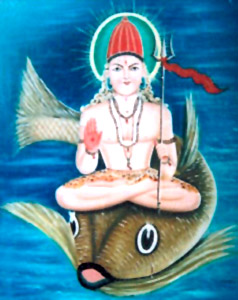
One day in his 27th year, a young man on his way to work as a clerk in the Electricity Department climbed the Rathinagiri Hill to offer his prayers. There was neither camphor nor incense available at the poor and delapitated temple. He walked around the shrine with a heavy heart and was suddenly overcome with divine awakening. He fell in a faint to the ground and on waking up was unable to remember his own self. He dressed himself in a loincloth. He took a sacred vow not to leave until the temple was restored to its former glory.
This memorable event of Swami's spiritual awakening took place on 20th March 1968. Ever since then Swami's spiritual well being of his devotees has continued unabated. Swami maintains maunam all these years, but he agreed to give this written account on 27 October 2001. "(Until that fateful day) I was not so fond of bhakti, but I used to pass by this way every day to reach my office work by 9 am. While passing by I would offer worship just like other people.
But on that 20th March 1968 I climbed the hill to have darshan. He asked the priest who was doing puja to burn a little camphor for aradhana. He said, "We have no camphor and no incense."
He felt like crying. He came out from the moolasthanam and went for pradakshinai (circumambulation) and worship seeing the Deity.
At that moment he lost all my other concerns and made up my mind to have a vow to make the poor sanctum of Rathinagiri to be as glorious as the Lord's Aru Padai Veedukal.
From that day onwards he have been observing maunam (silence) and doing my prayers. Now when visitors come to the temple, he is offering them food and hospitality. Now you can see the change in status of the temple. It is not I but the Lord or His Grace (that makes this possible).
Now Rathinagiri Bala Murugan Temple has become one of the famous and notable temples of South India. And it will become one among the Padai Veedus shortly.

